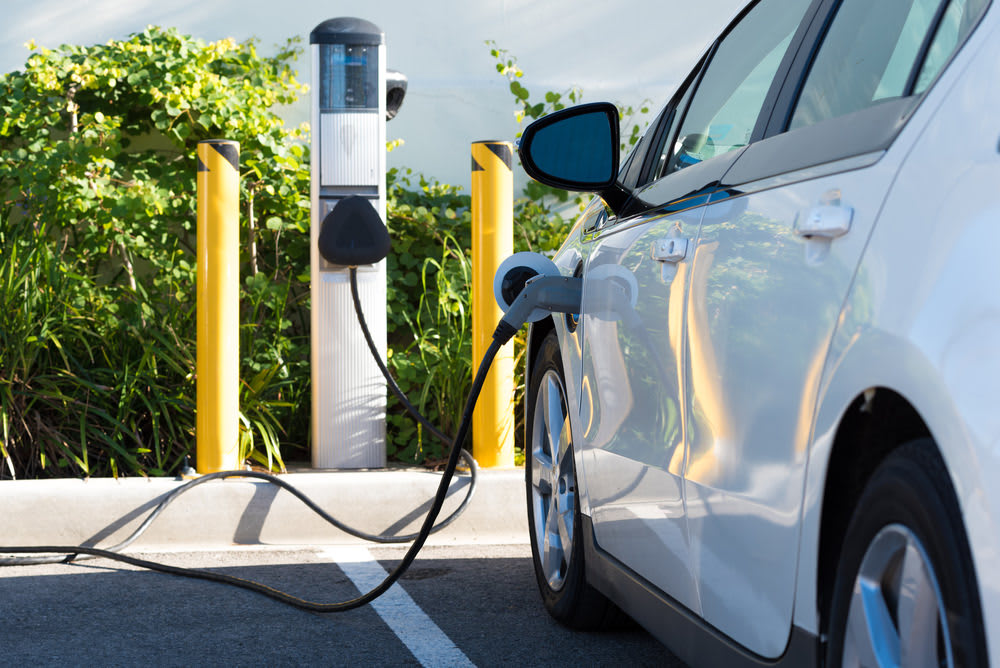

Electric cars contain rechargeable, lithium-ion batteries designed to produce high-energy outputs. They continue to weigh significantly less than their energy density would imply and reduce the overall emissions poured out by cars. Plug-in hybrids contain charging abilities as well as gasoline compatibility for fueling. Many non-hybrid electric cars advertise their “zero-emissions” capabilities.
Electric vehicles (Evs) earn their name from running off electricity instead of gasoline. “Fueling up” translates into “charging” the car’s battery. The mileage you get off a full charge varies depending on the EV’s manufacturer. A car with a 100-mile range driven 50 miles each day would have a so-called “deep discharge” of its battery, which drains 50% every day — a difficult number to make up with most home charging stations. For driving the same distance, a car with a higher full-charge range would be more ideal because it gives off a “shallow discharge.” Shallower discharges reduce the overall degradation to the electric battery and help it last longer.
Even with the smartest of purchasing intentions, eventually, an EV will need its battery replaced just like an SLI (starting, lighting, and ignition) battery-operated car. Regular car batteries are nearly 100 percent recyclable, and electric batteries are on their way to matching that with a 96 percent reusability score. However, when it comes time to replace your electric car’s battery, if it’s outside the vehicle warranty, it may be the steepest price you pay in car maintenance.
Replacing Electric Car Batteries
Due to the high price of an electric battery to begin with (it takes up the bulk of your payment for the EV itself), buying a replacement can be costly. To counteract this situation, most electric vehicle manufacturers provide a warranty for repair or replacement of the battery. Within a number of miles or years, and if the battery no longer charges above a certain percentage (typically 60-70%), it is eligible for manufacturer-backed replacement. Make sure to read the fine print when receiving services — not all manufacturers will reimburse work done on a battery performed by a technician outside the company. Some popular electric vehicle warranties include:
- BMW i3: 8 years or 100,000 miles.
- Ford Focus: 8 years or 100,000 - 150,000 miles depending on the state.
- Chevy Bolt EV: 8 years or 100,000 miles.
- Nissan Leaf (30 kilowatts): 8 years or 100,000 miles (24kW covers only 60,000 miles).
- Tesla Model S (60 kilowatts): 8 years or 125,000 miles (85 kW includes unlimited miles).
Should it appear your electric vehicle no longer holds a full charge or seems to deplete faster than anticipated, battery pack or battery servicing may be required. A qualified mechanic can often do the job and may even offer you reimbursement for your old battery. The majority of its components can be recycled and repurposed for future use. Make sure your vehicle’s warranty covers work done outside the manufacturer to save on service payments.
Factors Impacting Battery Life
Lithium-based EV batteries run in cycles. A charge and ensuing discharge counts as one cycle. As the number of cycles increases, the battery’s ability to hold a full charge will decrease. Fully charged batteries contain the highest voltage possible, with battery management systems built in to prevent voltage from exceeding its operating range and temperature. On top of cycles, which the battery is designed to endure for a significant amount of time, factors detrimental to long battery life include:
- Extreme high or low temperatures.
- Overcharging or high voltage.
- Deep discharges (battery drains) or low voltage.
- Frequent high charge current or discharges, meaning too many fast charges.
How to Increase Battery Life
To prolong electric car battery life, follow these 7 best practices:
- 1. Don’t leave battery at full charge. Leaving it at full charge too often stresses the battery and degrades it faster.
- 2. Store in a garage. Keep your EV in a garage or temperature-controlled space whenever possible to avoid temperature extremes.
- 3. Plan for outings. Pre-heat or pre-cool the EV before going out if you haven’t unplugged the car from your home charging station. This practice helps you avoid using battery power while driving.
- 4. Use Economy Mode if available. EVs with “eco mode” will turn off the car battery while stopped. It acts as a battery power-saver and helps minimize your vehicle’s overall energy consumption.
- 5. Avoid speeding. Battery efficiency tends to decrease when you exceed 50 miles-per-hour. When applicable, keep your driving speed down.
- 6. Avoid braking hard. Hard braking uses the car’s conventional brakes. Regenerative brakes activated with gentle braking save battery energy, while friction-based brakes do not.
- 7. Plan vacation settings. Set the charge level to 50% and leave the EV plugged in while away on long trips, if possible.
Electric vehicle batteries are constantly improving with each new car model. They grow increasingly efficient and cost-effective with further developments. Innovation in battery life and design contribute to the popularity of EVs as they become more affordable. Charging stations pop up in new places across the country to provide services to the car of the future. Understanding how electric car batteries work maximizes the efficiency an EV owner can gain.



